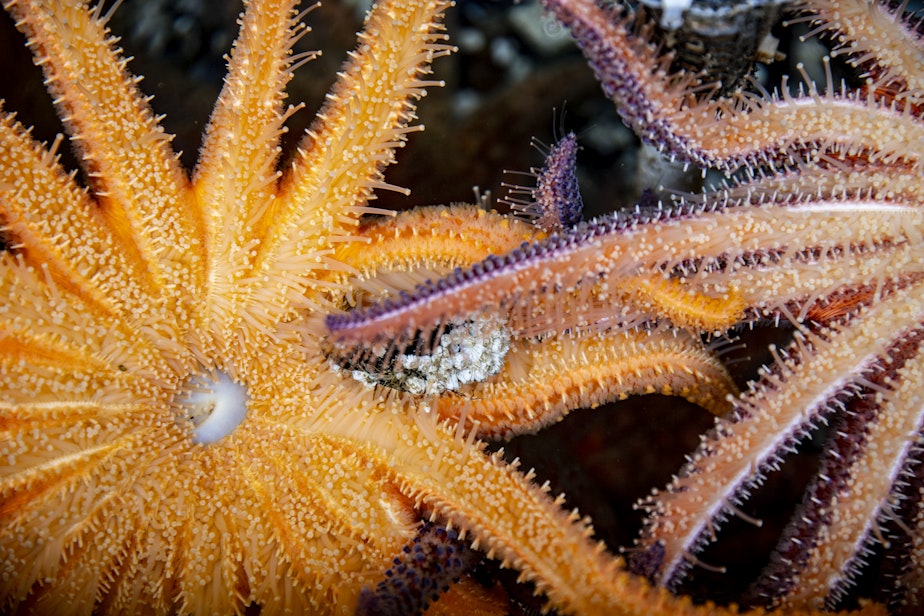Rare and resilient: Sunflower sea stars found on Oregon Coast

Staff at the Oregon Coast Aquarium regularly search nearby Yaquina Bay for ocean life. On a recent voyage, they came across a big surprise — a group of 25 sunflower sea stars.
If you’re unfamiliar, these are some of the largest sea stars in the world. They can grow up to 3 feet in diameter, sprouting up to 24 arms. And they may also be a threatened species.
A decade ago, a disastrous pandemic of sea star wasting disease stormed along the West Coast. Sunflower sea stars, a unique generalist predator that feasts on purple sea urchins, were decimated, and a sighting of these stars in the wild is rare.
"It's a pretty big find," said Jason Hodin, who studies sunflower sea stars at the University of Washington's Friday Harbor Labs. "As far as we know, there haven't been those kinds of numbers seen basically anywhere... since before the big sea star wasting pandemic hit."
After years of decline due to a devastating wasting disease, efforts to restore this keystone species are showing promising results. Hodin and the team at Friday Harbor Labs are growing sunflower sea stars in captivity, which start out as thousands of larvae the size of a spore. The team is slowly working to reintroduce these stars back into the wild.
"I want to make sure that I don't suggest that we are growing stars in my tiny little laboratory that can repopulate the entire West Coast of North America," Hodin said. "That's not going to happen. But what we can do is develop protocols and understanding of how to do this so that it can be replicated on a larger scale."
These sea stars, also known as starfish, play a vital role in maintaining biodiversity and promoting the health of underwater habitats. With their impressive size and voracious appetite for prey, they help control populations of sea urchins, preventing overgrazing on kelp forests and preserving the delicate balance of marine life.
Sponsored
The wasting disease caused their limbs to disintegrate, leading to a rapid decline in their numbers. By 2021, sunflower sea stars were classified as critically endangered by the International Union for the Conservation of Nature.
Recent studies at Friday Harbor Labs have shown encouraging signs of sunflower sea star recovery. Surviving individuals in the wild may signal a resistance to wasting disease, though researchers are still largely in the dark when it comes to how the disease operates and if variants are developing.
"Are they not exposed to it as much because there's less of it out there in the wild? And might there be another uptick in disease in the wild? We don't know the answers to this question," Hodin said.
Listen to the full segment by clicking "play" on the audio above.






